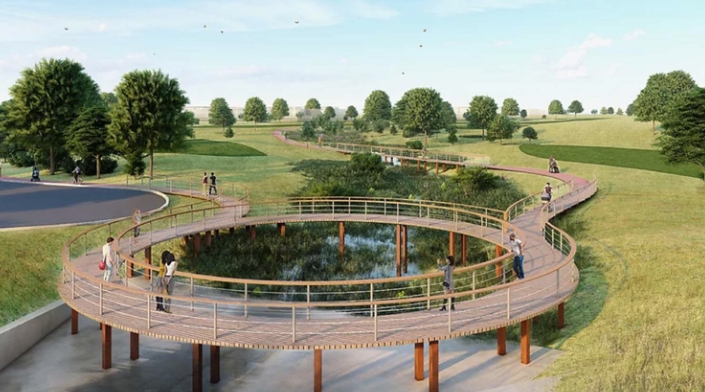In today’s rapidly changing world, the role of landscape in contemporary architecture is evolving to meet the needs of modern society. Landscape architecture is no longer seen as just a decorative element, but as an integral part of the design process that can enhance the overall experience of a space.
Integration of Nature
One of the key trends in contemporary architecture is the integration of nature into the design of buildings. This can be seen in the use of green roofs, living walls, and other forms of sustainable architecture that incorporate natural elements into the built environment. By connecting buildings to the surrounding landscape, architects are able to create more harmonious and sustainable spaces that benefit both people and the environment.
Creating Connections
Another important aspect of landscape in contemporary architecture is the creation of connections between indoor and outdoor spaces. Designers are increasingly incorporating elements such as courtyards, terraces, and gardens into their designs to blur the boundaries between inside and outside. This not only allows for a greater sense of connection to nature, but also helps to improve the overall well-being of the occupants by providing access to fresh air and natural light.
Sustainability and Resilience
In response to growing environmental concerns, contemporary architects are also focusing on creating sustainable and resilient landscapes. This includes using native plants, designing water-efficient irrigation systems, and incorporating renewable energy sources into the design of buildings. By prioritizing sustainability in their designs, architects are able to reduce the environmental impact of their projects and create spaces that are better equipped to withstand the challenges of climate change.
Emphasizing User Experience
One of the most important aspects of landscape in contemporary architecture is its impact on the user experience. By designing spaces that are not only visually pleasing, but also functional and comfortable, architects are able to create environments that enhance the well-being of the people who use them. This can include elements such as outdoor seating areas, walking paths, and recreational spaces that encourage social interaction and physical activity.
In conclusion, the role of landscape in contemporary architecture is continuing to evolve as designers strive to create spaces that are not only aesthetically pleasing, but also sustainable, resilient, and user-friendly. By integrating nature into their designs, creating connections between indoor and outdoor spaces, and prioritizing sustainability, architects are able to create spaces that enhance the overall experience of the people who use them. As we continue to face new challenges in the built environment, it will be important for architects to continue pushing the boundaries of traditional design practices and embrace the evolving role of landscape in architecture.

